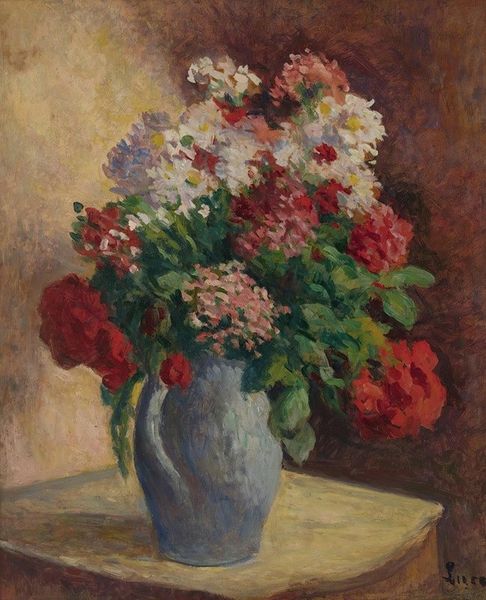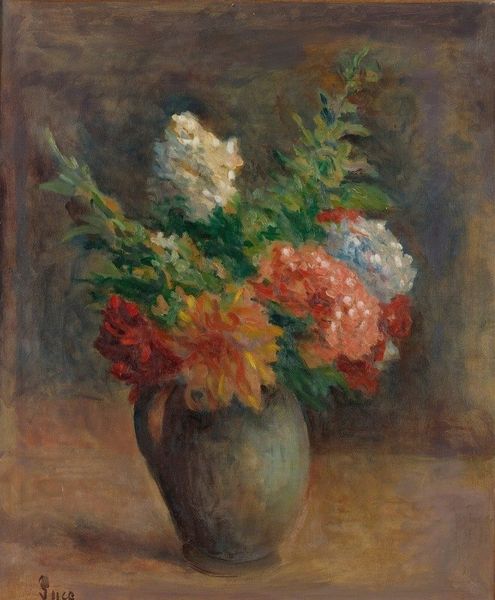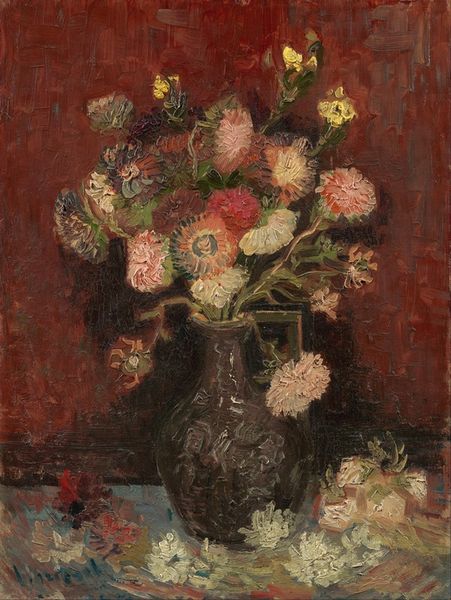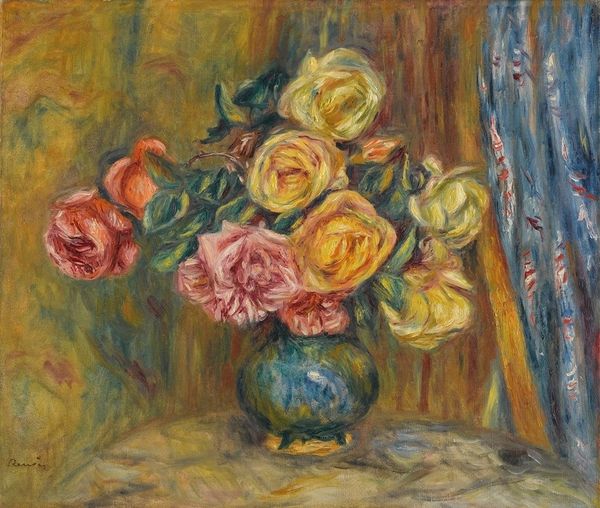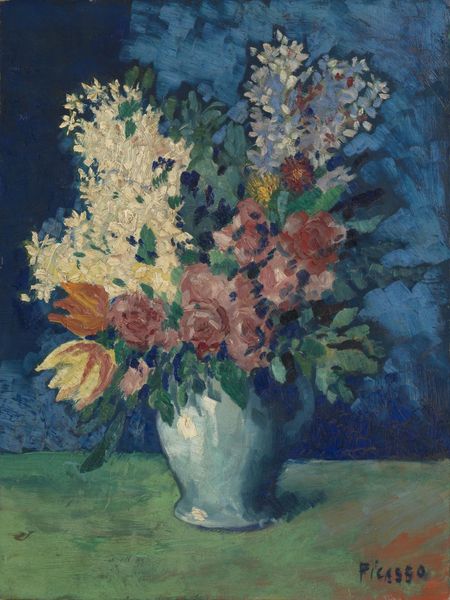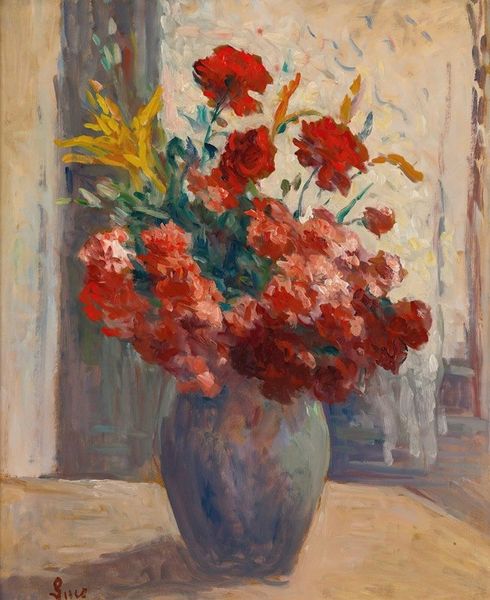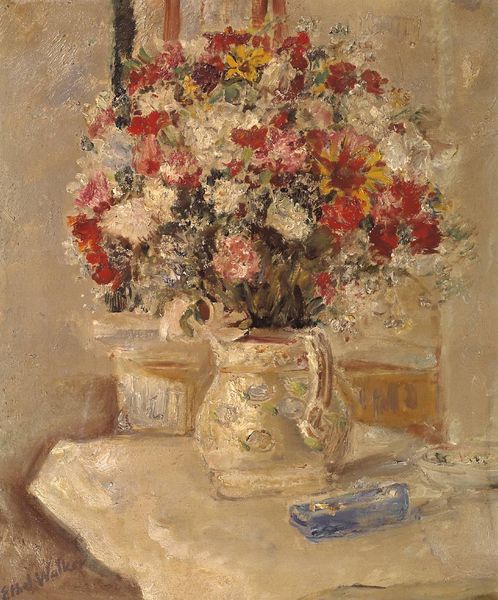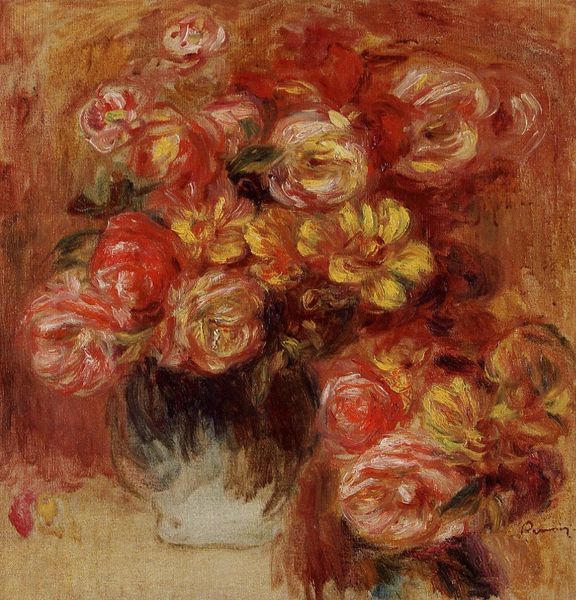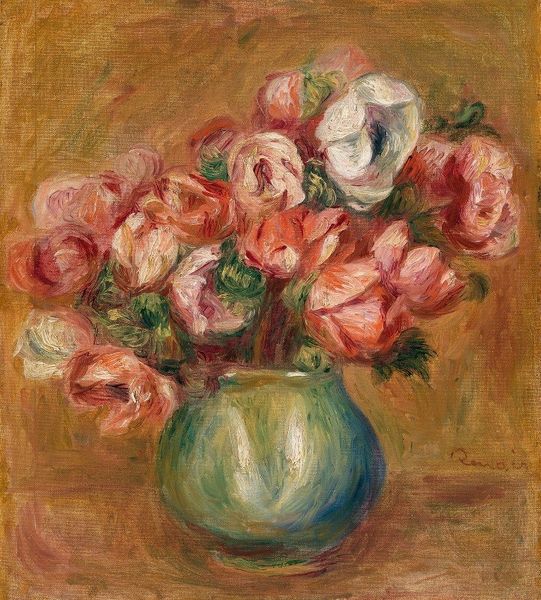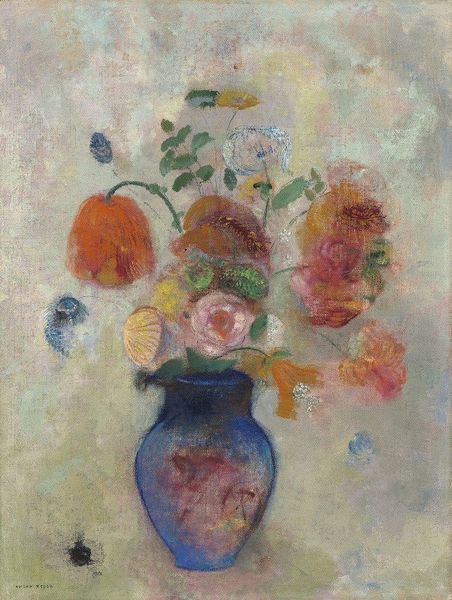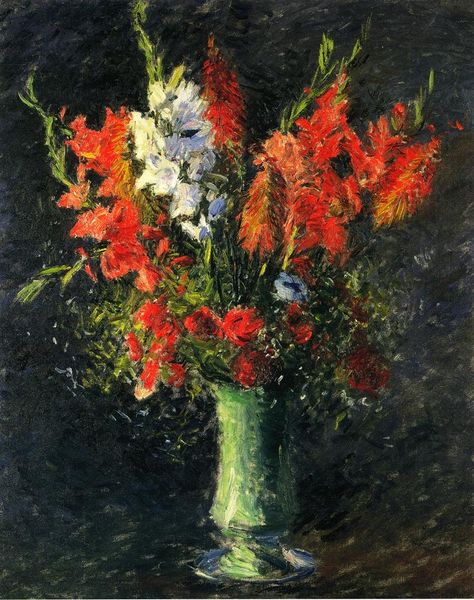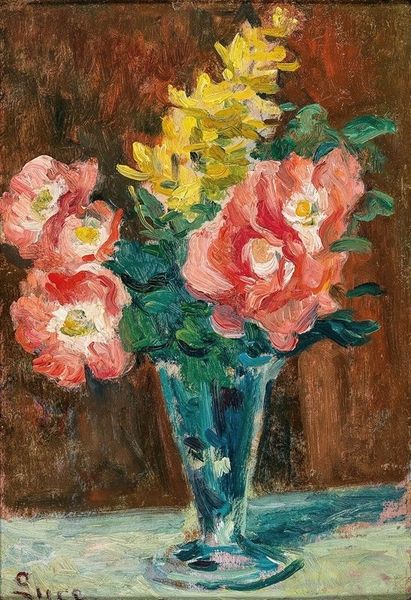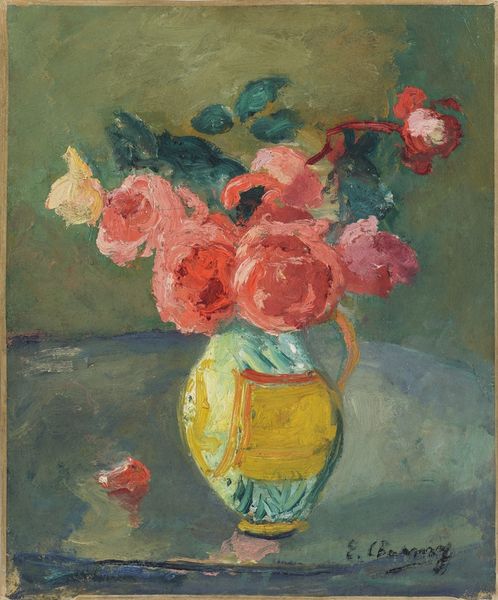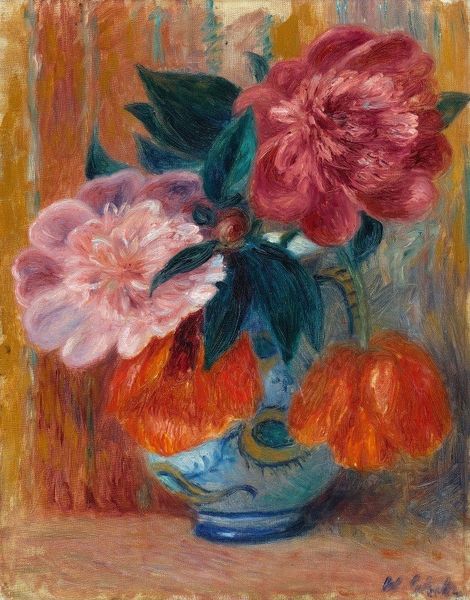
Copyright: Public Domain: Artvee
Editor: Here we have Camille Pissarro's "Bouquet" from 1900, created with oil paint, showing vibrant, loose brushstrokes. I'm immediately struck by how the visible brushwork gives the flowers a sense of immediacy, almost like they're still growing. How do you read this piece? Curator: Looking at "Bouquet" through a materialist lens, it's interesting to consider Pissarro's labor. Oil paint, a manufactured material, has allowed for this expressive handling, those impasto strokes that you pointed out. We also see how the application, this direct engagement with material, elevates the everyday—flowers—into 'high art'. What about the implied social context—who purchased, owned, or was portrayed by, this type of work and in this way? Editor: That's interesting – so thinking about how the material and the act of painting were viewed at the time. Were these 'quick' paintings seen as less valuable than very precise renderings? Curator: Precisely. But Pissarro, aligning with Post-Impressionism's evolving material appreciation, seemed to challenge those distinctions. This wasn't simply representation, it was also a demonstration of how material transformed through labor. Think about the consumption too—the rising middle class able to afford such artworks for the home; their patronage enabled Pissarro’s ongoing exploration. Editor: So the materials and how they were used speaks to broader societal shifts and changing definitions of art and value. It’s not just a pretty bunch of flowers. Curator: Exactly! It prompts questions about the systems that allowed for its creation, its audience, and its subsequent journey through history to reach us here, today. Editor: That really reframes my understanding of Impressionist paintings, thanks for highlighting the role of materials in this period.
Comments
No comments
Be the first to comment and join the conversation on the ultimate creative platform.
